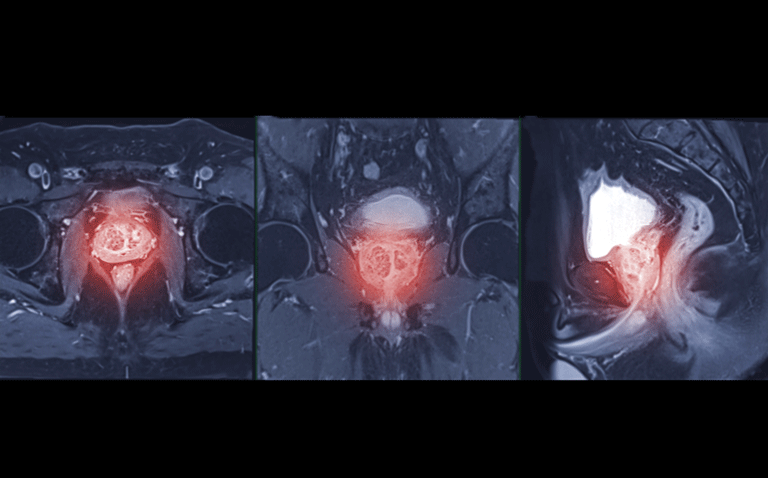Prostate cancer screening that involves an MRI scan following a PSA test and then targeted biopsies was shown to be a cost-effective approach
A prostate cancer screening strategy that involves an MRI scan following a prostate specific antigen (PSA) test with subsequent targeted biopsies, is a more cost-effective strategy than using just a PSA and standard biopsy according to a cost-effectiveness analysis by Swedish researchers.
Prostate cancer (PCa) screening based on PSA, has been shown in a 16-year follow-up study, to reduce prostate cancer mortality. A biopsy is normally used to confirm the diagnosis of PCa though in recent years there has been an increase in the role of magnetic resonance imaging (MRI) as an alternative means for the identification of PCa. In fact, data suggests that the use of multi-parametric magnetic resonance imaging (MP-MRI) might allow 27% of patients to avoid a primary biopsy. In a 2021 study which compared MRI-targeted or standard biopsy for the purposes of screening for PCa, it was found that in men with a PSA level > 3 ng/ml, an MRI result suggestive of prostate cancer was non-inferior to standard biopsy for detecting clinically significant prostate cancer. In the trial, men were randomised to either a 10 to 12-core standard biopsy or to undergo a triage MRI and then a standard biopsy if the MRI results suggested prostate cancer. Given the non-inferior findings of this study, the Swedish team set out to determine the cost-effectiveness of the MRI-based screening approach in men aged 55 to 69 years of age.
The researchers modelled three scenarios: no screening (strategy 1); PSA and standard biopsy every four years (strategy 2) and finally, MRI following an elevated PSA and then a standard biopsy if the men had a PI-RADS value of between 3 and 5, i.e., which is suggestive of PCa. For each of the three strategies, the team modelled several different outcomes including the mean lifetime number of screening tests, MRIs, over-diagnosis (where screening was positive but would not have presented with symptoms before death due to other causes) and deaths. The incremental cost-effectiveness ratio (ICER), which represents the additional cost of one unit of outcome gained by one strategy compared with another, was calculated for each scenario. The ICER was calculated by dividing the difference in costs by the difference in quality-adjusted life-years (QALYs) for the no screening and the two alternative strategies.
Prostate cancer screening and cost-effectiveness
A total of 603 men were randomised to the standard arm and 929 to the MRI arm and of whom, 11.9% underwent MRI or any biopsy.
When compared against a strategy of no screening, the ICER for the MRI and combined biopsies was $53,736 per QALY gained compared to $69,254 for the PSA and standard biopsy strategy and which the authors designated as a moderate cost per QALY gain. Furthermore, MRI-based screening reduced the number of lifetime biopsies and over-diagnosis by approximately 50% and had a high probability of being cost-effective compared to the alternative strategies.
The authors concluded that a strategy for prostate cancer screening based on PSA followed by MRI with subsequent combined targeted and standard biopsies, had a high probability to be more cost-effective compared with the traditional screening pathway using PSA and a standard biopsy.
Citation
Hao S et al. Cost-effectiveness of Prostate Cancer Screening Using Magnetic Resonance Imaging or Standard Biopsy Based on the STHLM3-MRI Study. JAMA Oncol 2022










